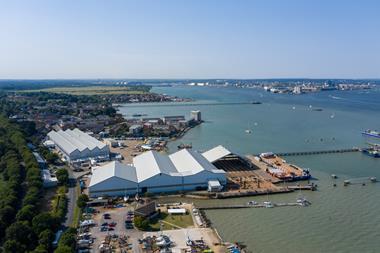The European office market is facing challenges from the acceleration of working from home (WFH), but the long-term adverse impact of remote working is likely to be more marginal than feared by most, according to Hans Vrensen, managing director and head of research and strategy at AEW in Europe.
Speaking to IPE Real Assets at the Expo Real 2023 trade fair in Munich, Vrensen said he believed the impact of WFH on offices would be minimal, as people will still want places to sit and meet when they are in the office, even if they are present less frequently.

Overall, the supply of new office space in Europe is and has been limited, leaving vacancies relatively lower than in the US. Vrensen attributed this to a number of factors, including the stricter banking rules since the global financial crisis (GFC), limiting the availability of debt for speculative office development, tough local planning restrictions and the rising cost of construction.
Vrensen, who also discussed the challenges of meeting climate targets in the European real estate sector, said there had been real progress on improving the measurement of the carbon footprints and energy efficiency of buildings, including the Carbon Risk Real Estate Monitor (CRREM).
Rising interest rates, declining collateral values and more conservative lending standards have made it harder to obtain debt for real estate investments, but Vrensen was optimistic that the European institutional real estate market would overcome the challenges which, he said, were of “significantly lower magnitude” than the adjustments made after the GFC.
Vrensen said higher inflation, the war in Ukraine and rising interest rates were adding to the uncertainties facing the European real estate market. However, he believes that the long-term benefits of real estate investment, such as its physical nature and its relatively attractive risk-adjusted returns, still stood.
“Real estate is a physical asset that is not going away,” he said. “Its risk-adjusted returns are attractive and have proven resilient compared to other asset classes, such as stocks and bonds, while offering diversification benefits to mixed asset investors.”
To read the latest edition of the latest IPE Real Assets magazine click here.























